Revisiting the original "A Star Is Born"
 Friday, October 1, 2021 at 10:00PM
Friday, October 1, 2021 at 10:00PM As the next Supporting Actress Smackdown approaches, The Film Experience is celebrating the cinematic year of 1937. It was then that Hollywood consolidated its favorite myth about itself. While the story model had been making the rounds for ages, both in gossip and on-screen (check out What Price Hollywood?), William A. Wellman's A Star Is Born is the first movie of its name. The tale of Norman Maine and Vicky Lester, his downfall and her rise to fame, would be told three more times to great effect, but one should never forget the original. Not when the movie is this pristine, written to formidable effect by a team that included the legendary Dorothy Parker and performed with utmost conviction by Fredric March and Janet Gaynor…
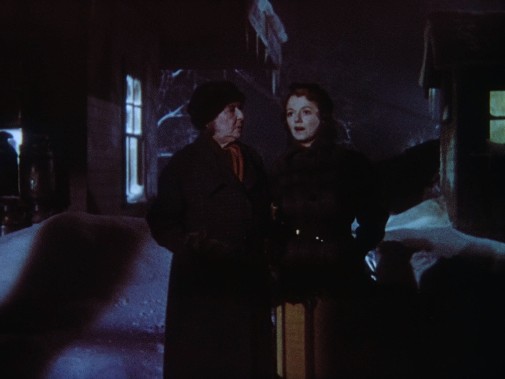
The first all-color production nominated for the Best Picture Oscar is surprisingly dark, both in narrative and aesthetic. When one thinks of 1930s Technicolor, a glitzy spectacle is the first thing that comes to mind. However, in a gesture that preceded future developments of popular taste, Wellman and cinematographer W. Howard Greene use chromatic variation to signal the pursuit of realism. This A Star Is Born may not correspond to a contemporary conception of realistic cinema, though the context of 1937 Hollywood helps by providing contrast. In a cosmos of studio-bound froth obsessed with codifying the unreachable glamour of a faraway ideal, Wellman's picture shocks for its obsession with showing the shadows that coexist with the brightest lights of show business.
There's a sense of gloomy realism subsuming the sentimental imagery, a modicum of unexpected grittiness smudged on the face of a sad Hollywood fairytale. One thinks of the deep shadows encircling an unsentimental May Robson as she says goodbye to Gaynor. The picture's the glistening painting of a loving grandma seeing her granddaughter for what may be the last time (it's not), teary eyes hidden by the shadows of a cold black night. On another occasion, Norman's first moves on Esther are made sinister by the projected penumbra that his looming figure casts over her. Tweak the music a bit, and the scene becomes about menace than blossoming romance. That being said, it takes time for the two lovers to cross paths, much more than in the remakes.
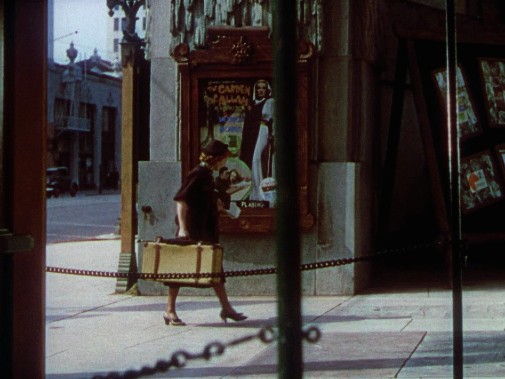
We may hear about the leading man early in the picture, but 20 minutes go by before we ever lay eyes on Fredric March. In these first passages, we follow Esther's early ventures into the entertainment world, her disappointments and small contentments. Rather than meeting her as a professional whose dreams of stardom have survived meager exposure, we see her first in a dark snowy cabin, a movie fan far away from the dream factory. It's the kindness of that self-sacrificing grandmother that grants her the ticket to California, a journey that takes her from chilly barrenness to metropolitan swelter. The shadows follow her along, paradoxically intensified by the West Coast sun.
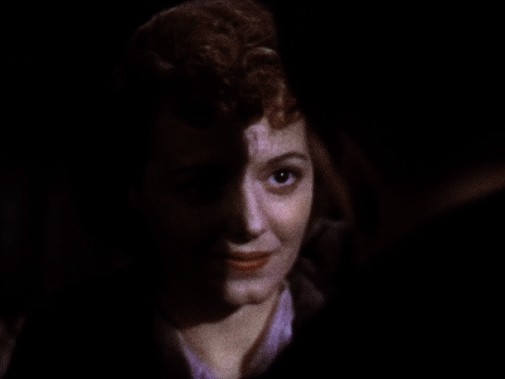
Throughout this, even as she plays how every dashed hope is cut off from her soul like a necrotic limb, Janet Gaynor lends open luminosity to Esther. Indeed, the first Best Actress champion in Oscar history is surprisingly delicate at conveying devastation, keeping a soft touch even as her character despairs over the grindingly slow start of her Hollywood odyssey. Her feeble celebrity impressions are hilarious failures, like a bad Marion Davies routine. She's a star without stardom, a leading lady bereft of the spotlight or the magnetism needed to hold it in place. And yet, we always feel as if she has something big in her future. Part of it is, again, the cinematography, which reflects the leading lady's insouciant grace.
Despite the ersatz brightness of the backlot sets, Hollywood is portrayed as a rather gloomy environment. Even the cinemas and music halls are dark places, full of people dressed in drab browns and cold grays. Such harshly lit gloom makes Esther stand out, both as a beacon of innocence and a chromatic variation. Gaynor's round face and red hair make it impossible for her not to be the gravitational center of every composition. On the other hand, March is a continuation of the gloom, always ready to fall off frame into the featureless blacks of dim corners. He's always on the edge of oblivion. Their way of inhabiting the screen, their energies, is so antithetical they feel complimentary, one providing what the other lacks. She's the Technicolor pop to his chiaroscuro depths.
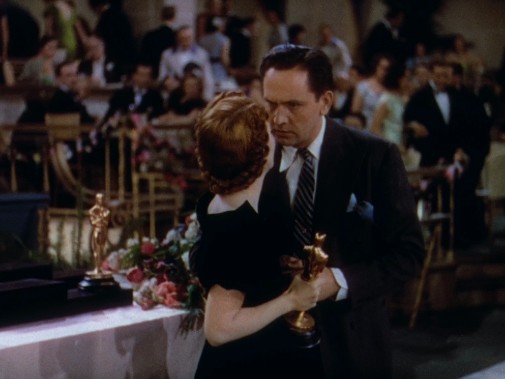
That's never more obvious than in the famous Oscar scene when Esther wins but has the moment stolen by her drunken husband. The shocking slap is disconcerting here, maybe more so than in any other version, not because of how scandalous and humiliating it is, but for how sorry Norman instantly feels. The horror that flashes across March's petulant mask is even more painful to behold than Gaynor's controlled stoicism. Both actors capture that lacerating dynamic by which one tries to pretend everything is alright for the sake of their loved ones. There's playacting involved, desperate lightheartedness, and a woeful plight for laughs, anything that will keep the other from suffering. In the end, though, the effort is futile.
Speaking of Oscars and this first A Star Is Born, no matter how much I admire Gaynor, she's far from the top of that particular Best Actress roster. March, on the contrary, should have sued the Academy for the highway robbery that happened at the 1937 Oscars. How he lost to Spencer Tracy's disastrously accented stint in Captains Courageous is beyond me. Maybe it comes down to how ugly and insidious Norman is, how charmless his drunken seduction remains even as the jig seems to work on Esther. March's perfectly calibrated work is like the implosion of a star vehicle, starting with a presumption of silver screen success and then exploding it open at every opportunity.
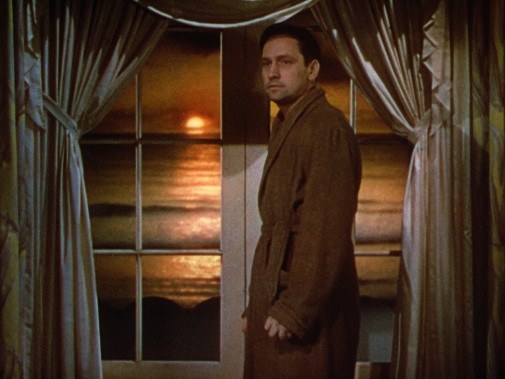
Only at his lowest does March's Norman become easy to watch, a morbid revelation that makes his end more bittersweet than tragic. When making his fateful decision, one gets the sense that he feels peace, maybe for the first time in a long while. He's excellent, as is the movie. However, I can't say it's my favorite A Star Is Born like I can state that his take on Norman is my predilect. Wellman's picture is the least indulgent of the present quarter, the most structurally disciplined, but there's something perversely fulfilling about the mountainous ambitions of its musical successors. For me, the 1954 remake is pretty unbeatable, but the scale might be unjustly tipped by my undying love for Garland's bruising tour de force. What's your favorite iteration of A Star Is Born?
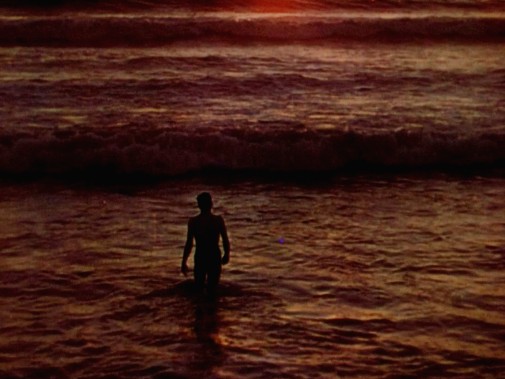
The 1937 version of A Star Is Born is available to stream on Roku, Hoopla, and many other services. You can also rent it on various platforms.



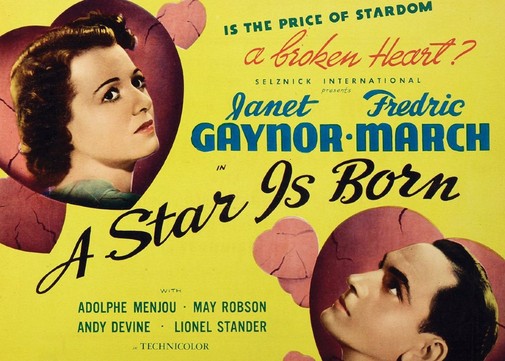
Reader Comments (8)
All four iterations have their highs and a reason to recommend them. My personal favorite is George Cukor's with Frances Ethel Gumm's transformation into Esther simultaneous with Judy With A G becoming Vicki. Having said that I do think many actors would have trouble topping the performance of Fredric March. Had he not tied for the win in 1932, he would have been the clear favorite.
It’s eery how much this also played out year later: How Bradley Cooper’s masterful performance lost to a total joke like Rami Malek still confounds me.
Casting is always an intriguing decision. Director Wellman originally sought John Barrymore to play Norman Maine. However, the alcoholic star had reportedly deteriorated to a point where he required cue cards to get through a scene. Under different circumstances, A Star is Born might have been the renowned actor's shining achievement and won him
that elusive Oscar.
Finbar McBride- John Barrymore played a similar role in Dinner at Eight 4 years earlier. He needed help getting through that shoot as well. By then, most in Hollywood knew that he would have been impossible to work with or insure.
Judy's '54 take is the one that made the most of the material but there is a huge amount of worth in this one.
As great as James Mason is the Judy's version Fredric March is peerless. I share your incredulity at his loss to what I think is Spencer Tracy's worst performance. March goes so deep under Norman Maine's skin it's scary. There are times during the film where you want to look away but just can't because he's so compelling.
I read with interest your analysis of the lighting and cinematography. I usually focus on the performers, when I watch the film next time I'll have to look at that facet more closely.
This is a terrific framework for the story but I think the 50's version did some things that both streamlined and toughened the narrative in an effort to make room for the music.
The melding of May Robson and Andy Devine's characters into the wry best friend Danny sharpened the impact of the role so that it made sense that he was able to shake Esther out of her grief not with sweet homilies like this one did but a stinging dose of reality. Also the Libby in this is just a grumpy curmudgeon whereas the odious barracuda Jack Carson makes him seems truer. Though to be fair Norman while at heart a good man would test the patience of anyone who had to clean up after him for all those years.
I read an interview with Janet Gaynor years ago now where she said that while she loved the Garland/Mason film she felt that her film was a more relatable version because someone as enormously talented as Judy would have invariably been discovered one day and become a huge star whereas her Esther was just a regular girl who had that indefinable SOMETHING that caught the camera and public's eye so if it could happen to her it could happen to anyone.
I'd rate the four versions in this order:
The Garland/Mason restored version-the only fault isn't the film's but the studios for trying to hack it to pieces. Fortunately it's been somewhat saved.
The Gaynor/March version
The Gaga/Cooper version restores some of the romance to the story but errs in a shift of focus away from the renamed Ally to Cooper's doomed character. It is called A Star is Born not A Star Collapses. It also weakens the female character, in all the others when the powers that be try and bend her into an established mold Norman steps in and strips the junk away back to her essence, a major element of her character and that's lost in this film.
The Streisand/Kristofferson version is dead last by miles. It cheapens and coarsens everything that was lovely and special about the previous films. An abomination except when Babs sings.
Thank you for the sharp analysis of a film I love. I first saw this version decades ago when I was becoming interested in classic films and I revisit it every few years. While Judy Garland give the performance of her career in the remake, the 1937 version nails it for me. I agree with the comments about March inexplicably not winning the Oscar but I think Gaynor definitely deserves her nomination for all the reasons mentioned. She projects both vulnerability and strength but knows how to make the most out of every moment without overplaying. There's something about certain actors and actresses who got their break in the silent era and knew how to convey the emotional text without dialogue, and I always thought Gaynor did this beautifully. As for the color, I believe producer David Selznick struck a deal with Technicolor to make a certain number of films using the three-strip process (introduced in 1935) as a way of promoting it. The supporting cast also is wonderful -- Andy Devine, May Robson, and the marvelous Lionel Stander (his line reading of "Vicki Vicki" always cracks me up).
This movie is so good. I always hoped that the success of the new version of this story would pique its fans' curiosity about this chestnut, which really holds up. The two stars are at the top of their game and have incredible chemistry. March in particular is heartbreaking.
I would rate this iteration in second place, followed closely by the Garland/Mason version, which suffers from Jack Warner's interference and irreparable butchering of Cukor's vision. The Gaga/Cooper version is the best--it is a stunning feat, it has very few flaws, and the ones it does have are endearing and/or serve as biting commentary.
The Streisand/Kristofferson film is trash.
Lenard W -- I'm becoming a bit of a Fredric March fan. He's so good!
Fadhil -- That is truly an Oscar travesty for the history books.
Finbar McBride -- I wonder what lacerating realities Barrymore might have brought to the role. I sometimes have issues with his hamminess, but there's no doubt that his biography feels painfully close to the fictional Norman.
TomG -- That's right. Still, his work in DINNER AT EIGHT is a fascinating thing, a punch of wrought tragedy in a fizzy delight. I'm not sure it's good acting, but it's magnetic nonetheless.
joel6 -- I didn't know that about Gaynor's opinion on the different A STAR IS BORNs. Her comments make sense, though I still prefer the 1954 movie.
BGK -- Thank you for the lovely comment.
brookesboy -- I have little patience for the 1976 movie as well. That being said, its behind-the-scenes stories are fascinating.